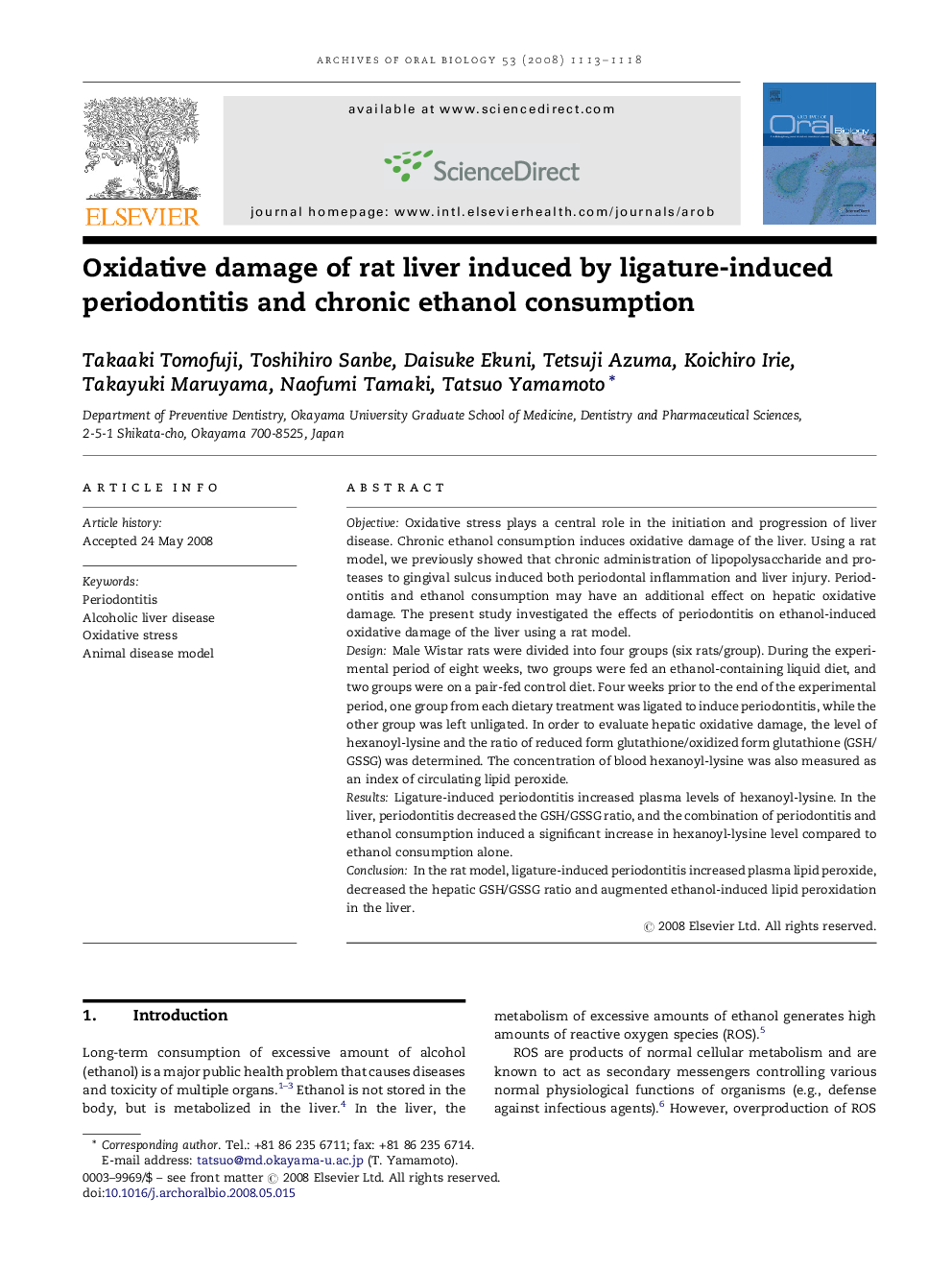| Article ID | Journal | Published Year | Pages | File Type |
|---|---|---|---|---|
| 3121347 | Archives of Oral Biology | 2008 | 6 Pages |
ObjectiveOxidative stress plays a central role in the initiation and progression of liver disease. Chronic ethanol consumption induces oxidative damage of the liver. Using a rat model, we previously showed that chronic administration of lipopolysaccharide and proteases to gingival sulcus induced both periodontal inflammation and liver injury. Periodontitis and ethanol consumption may have an additional effect on hepatic oxidative damage. The present study investigated the effects of periodontitis on ethanol-induced oxidative damage of the liver using a rat model.DesignMale Wistar rats were divided into four groups (six rats/group). During the experimental period of eight weeks, two groups were fed an ethanol-containing liquid diet, and two groups were on a pair-fed control diet. Four weeks prior to the end of the experimental period, one group from each dietary treatment was ligated to induce periodontitis, while the other group was left unligated. In order to evaluate hepatic oxidative damage, the level of hexanoyl-lysine and the ratio of reduced form glutathione/oxidized form glutathione (GSH/GSSG) was determined. The concentration of blood hexanoyl-lysine was also measured as an index of circulating lipid peroxide.ResultsLigature-induced periodontitis increased plasma levels of hexanoyl-lysine. In the liver, periodontitis decreased the GSH/GSSG ratio, and the combination of periodontitis and ethanol consumption induced a significant increase in hexanoyl-lysine level compared to ethanol consumption alone.ConclusionIn the rat model, ligature-induced periodontitis increased plasma lipid peroxide, decreased the hepatic GSH/GSSG ratio and augmented ethanol-induced lipid peroxidation in the liver.
